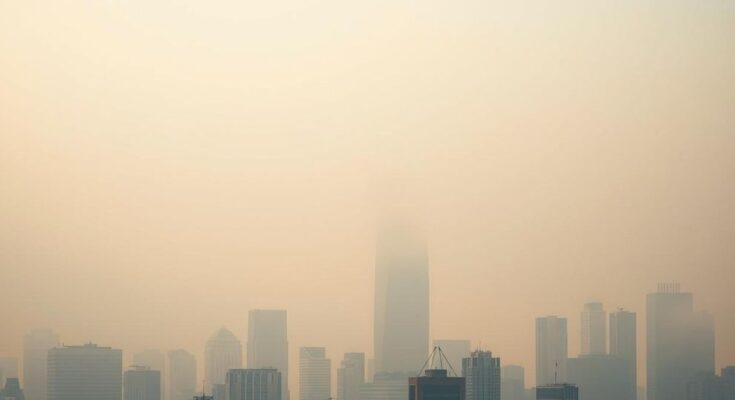A report reveals that only 17% of global cities meet air pollution standards, identifying serious air quality issues primarily in countries like Chad, Congo, Bangladesh, Pakistan, and India. The findings underscore the significant health risks posed by polluted air, which is exacerbated by inadequate monitoring and regulation. Efforts to improve air quality through stricter regulations and technology investments have shown promise in various cities, indicating that solutions are possible.
A recent report has highlighted a troubling global air quality crisis, revealing that only 17% of cities worldwide comply with established air pollution guidelines. This extensive analysis was conducted by IQAir, a Switzerland-based air quality monitoring database, which utilized data from 40,000 monitoring stations in 138 countries. It identified Chad, Congo, Bangladesh, Pakistan, and India as having the most severely polluted air, with India notably housing six of the nine most polluted cities, particularly highlighting Byrnihat as the worst offender.
Experts suggest that the reported levels of air pollution could be significantly underestimated due to inadequate monitoring infrastructure, especially in regions such as Africa, where there is alarmingly low coverage of air monitoring stations, averaging one station for every 3.7 million residents. In response to these concerns, there has been an initiative to expand air quality monitoring, with additions of almost 9,000 new locations this year alone.
However, a recent setback occurred when the U.S. State Department announced the cessation of public access to air quality data from its embassies and consulates, impeding efforts to track global air quality trends. Prolonged exposure to polluted air is linked to serious health issues, including respiratory illnesses, cancer, and Alzheimer’s disease. According to estimates from the World Health Organization (WHO), air pollution is responsible for approximately 7 million premature deaths annually.
Fatimah Ahamad, an authority on air pollution, emphasized the urgent need for improved measures to reduce pollution levels. She highlighted a stark reality: 99% of the global population resides in areas that fail to meet WHO air quality recommendations, underscoring that unlike inadequate water supply, air quality cannot be simply paused. Cities such as Beijing, Seoul, and Rybnik have made significant strides in improving air quality by enforcing stricter emissions regulations and investing in cleaner energy sources and public transport systems.
In Southeast Asia, the ASEAN agreement, although with limited success, represents a collaborative effort among ten nations to address transboundary haze pollution caused by forest fires, prevalent during dry seasons. Shweta Narayan from the Global Climate and Health Alliance pointed out that many regions suffering from intense air pollution are also major sources of greenhouse gases. She advocated for reducing carbon emissions as a dual solution to both air quality and global warming, positing that air pollution and climate change are interlinked issues.
The recent findings regarding global air quality reveal a significant public health crisis, with most cities failing to meet pollution standards. The urgent need for enhanced monitoring and stringent regulations is clear, as air pollution poses severe health risks and contributes to climate change. Successful examples from various cities demonstrate that improvement is possible through collaborative efforts and implementation of cleaner technologies. Overall, addressing air pollution is imperative not only for health but also for environmental sustainability.
Original Source: apnews.com




